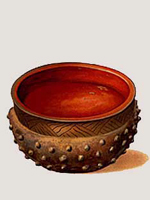Ancient Architects of the Mississippi

This small website uses essays and images to explain the life, art, and engineering of the Native American moundbuilders who inhabited the lower Mississippi River region from c. 8,000 BC to c. 1500 AD.
The main feature is the exhibits. Three exhibits, each centered on a short essay, focus on different aspects of the moundbuilders' life and culture. "Life Along the River" also has six captioned artist's renderings of life in the moundbuilders' cities. "The Moundbuilders" features a detailed description of Emerald Mound. And "Traders and Travelers" also has four images of the moundbuilders' art work, with explanatory text.
In addition to these three descriptive exhibits, "Delta Voices" offers 16 selected quotes about the mounds from both historical and contemporary persons. Additionally, there is a timeline and a short "context" section, with a map, that helps to locate the moundbuilders in place and history.
Search is limited to a search of all National Park Service websites. This website is a useful starting point for those interested in the history and culture of the Native American moundbuilders.